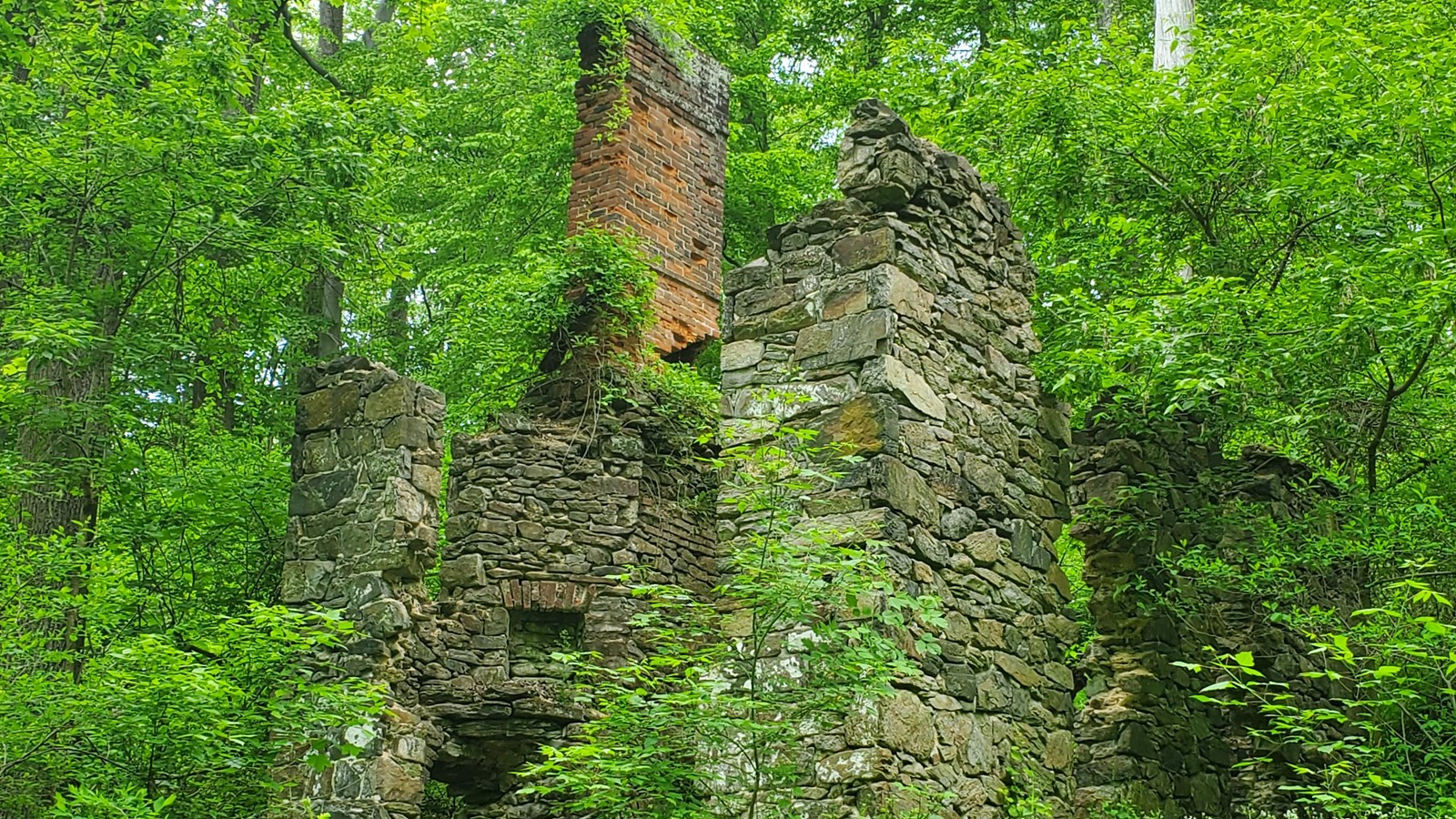Last updated: November 27, 2024
Place
Beaver Creek Ruins

NPS
Quick Facts
Location:
39.840117, -75.556705
Significance:
The ruins along Beaver Creek provide a physical reminder of the industrial history of the Brandywine Valley. The mills in the area provided finished goods that were then shipped around the nation and the world, making the Brandywine Valley a major early center for the Industrial Revolution in the United States.
Amenities
2 listed
Cellular Signal, Scenic View/Photo Spot
Note: Be aware that the ruins are too dangerous to enter and should be observed at a safe distance while remaining on the trail.
The ruins along Beaver Creek offer a glimpse into the storied history of the Brandywine Valley. With the establishment of Pennsylvania as a British colony under the proprietorship of William Penn in the late 1600s, English, Welsh, and Irish Quakers began to settle in the Brandywine Valley in large numbers. While the area had been home to groups of the Lenni-Lenape people for thousands of years, and had seen small scale settlement by earlier waves of European colonizers, primarily Swedes and Finns, these newcomers had the largest impact, shaping the landscape into the Valley we see today. While most of the farms, mills, and other buildings that these settlers built from the late 1600’s-mid 1800’s are lost to history, some examples remain, including the ruins of a house, a mill race, and the foundation of a saw mill along the northern bank of Beaver creek. The ruins of a two-story house, built in the late 1700s by the Green family, are the most prominent.
The Green family were typical of these largely Quaker settlers, building up a combined farming and milling operation through the 1700s and early 1800s. Beaver Creek provided the power source for the saw mill, the foundations of which are visible in colder months when vegetation dies back. The water of the creek was channeled through a mill race, the remains of which can be seen to the south from the trail. There are also the remains of several small dams along Beaver Creek, which when active kept water pooled up in mill ponds, ensuring a steady flow to power the mills. By the mid-1800’s, due to rapidly advancing technological breakthroughs, the once cutting-edge mills that had lined Beaver Creek were outdated and entered into a steep decline. Many were torn down or left to rot, leaving us with only a few physical reminders that the Industrial Revolution in the United States had begun in places like the Brandywine Valley.
The ruins along Beaver Creek offer a glimpse into the storied history of the Brandywine Valley. With the establishment of Pennsylvania as a British colony under the proprietorship of William Penn in the late 1600s, English, Welsh, and Irish Quakers began to settle in the Brandywine Valley in large numbers. While the area had been home to groups of the Lenni-Lenape people for thousands of years, and had seen small scale settlement by earlier waves of European colonizers, primarily Swedes and Finns, these newcomers had the largest impact, shaping the landscape into the Valley we see today. While most of the farms, mills, and other buildings that these settlers built from the late 1600’s-mid 1800’s are lost to history, some examples remain, including the ruins of a house, a mill race, and the foundation of a saw mill along the northern bank of Beaver creek. The ruins of a two-story house, built in the late 1700s by the Green family, are the most prominent.
The Green family were typical of these largely Quaker settlers, building up a combined farming and milling operation through the 1700s and early 1800s. Beaver Creek provided the power source for the saw mill, the foundations of which are visible in colder months when vegetation dies back. The water of the creek was channeled through a mill race, the remains of which can be seen to the south from the trail. There are also the remains of several small dams along Beaver Creek, which when active kept water pooled up in mill ponds, ensuring a steady flow to power the mills. By the mid-1800’s, due to rapidly advancing technological breakthroughs, the once cutting-edge mills that had lined Beaver Creek were outdated and entered into a steep decline. Many were torn down or left to rot, leaving us with only a few physical reminders that the Industrial Revolution in the United States had begun in places like the Brandywine Valley.
